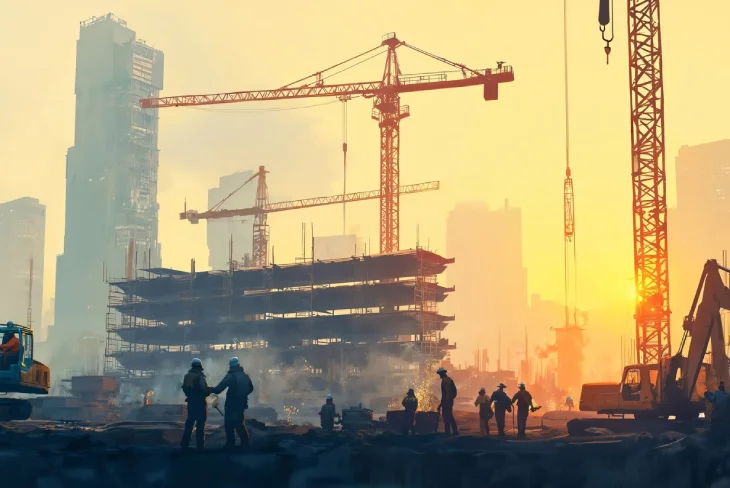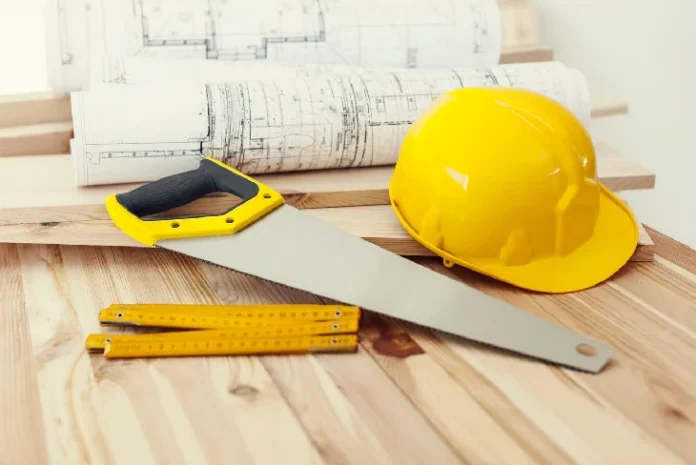Handling construction materials safely is essential to maintain a safe and productive work environment. The construction industry involves the use of various materials, tools, and equipment that can pose potential hazards if not handled properly. Therefore, it is important to follow best practices to ensure the safety of workers and prevent accidents on the job site.
In this blog post, we will discuss some of the best practices for handling construction materials safely and how they can help improve safety measures on construction sites.
Conduct a Risk Assessment
Before starting any construction project, it is essential to conduct a thorough risk assessment. This involves identifying potential hazards associated with the use of different materials, tools, and equipment. A risk assessment helps in developing strategies to mitigate risks and prevent accidents from occurring.
It would help if you involved all workers in the risk assessment process, as they are more likely to identify potential hazards that others may overlook. It is also vital to update the risk assessment regularly as new materials, tools, or equipment may be introduced on the job site.
Train Workers
Proper training is important for workers handling construction materials. They should be trained on how to handle materials safely, including the correct use of tools and equipment. The training should also cover emergency procedures in case of accidents or mishaps.
Workers should also receive training on proper lifting and carrying techniques to prevent injuries from strains and sprains. Regular refresher training sessions help reinforce safe material handling practices and ensure that workers are up-to-date with safety protocols.
Use the Right Personal Protective Equipment (PPE)
Wearing the appropriate personal protective equipment (PPE) is essential for workers handling construction materials. This includes hard hats, gloves, safety glasses, and steel-toed boots. Employers should provide the PPE and regularly check to ensure it is in good condition.
Workers should also be trained on how to use and maintain their PPE properly. If any PPE becomes damaged or worn out, it should be replaced immediately to ensure the safety of workers.
Organize and Store Materials Properly
Proper organization and storage of materials is important for maintaining a safe work environment. Materials should be stored in designated areas away from walkways and entrances/exits. This will prevent potential accidents caused by tripping or slipping.
Heavy materials should be stored at the bottom of a stack, and lighter materials on top. Additionally, shelves and racks should be installed to store materials safely and prevent them from falling or tipping over.
Use Mechanical Aids
Lifting and carrying heavy construction materials can put workers at risk for back injuries. Therefore, it is essential to use mechanical aids, such as forklifts, cranes, or conveyors to lift and move heavy materials. These devices should be regularly maintained and inspected to ensure they are in good working condition. Companies such as Stout Conveyors can often provide high-quality equipment for use, with trained staff as well to handle it.
If your own workers are operating these mechanical aids, they should also receive proper training on how to use them safely and follow all safety protocols.
Follow Material Handling Guidelines

Each type of construction material may have specific guidelines for proper handling and storage. It is important to have a safe Material Handling Design and follow the appropriate guidelines to prevent accidents and ensure the integrity of the materials. These guidelines may include weight limits, stacking heights, and storage requirements.
Employers should provide workers with access to these guidelines and ensure they are followed at all times.
Dispose of Waste Materials Properly
Waste materials can also pose a hazard if not disposed of properly. Construction sites should have designated areas for waste disposal, and workers should be trained on how to use these areas correctly.
Sharp or hazardous materials such as broken glass or nails should be disposed of in appropriate containers to prevent potential injuries. Waste materials should also be regularly removed from the job site to maintain a clean and safe working environment.
Keep Emergency Response Plans in Place
Despite following all safety protocols, accidents can still occur. It is important to have an emergency response plan in place in case of any mishaps. This should include procedures for reporting accidents, providing first aid, and contacting emergency services.
Workers should be trained on the emergency response plan and know what to do in case of an accident on the job site.
Regular drills can also ensure that all workers are familiar with the plan and know their roles in an emergency.
Regularly Inspect Tools and Equipment
Tools and equipment, such as end dump trailers in Utah, used for handling construction materials must undergo regular inspections to ensure they are in optimal working condition. Any damaged or malfunctioning tools should be promptly replaced to prevent accidents.
Additionally, workers using these tools should receive adequate training on safe usage and be informed of any potential hazards.
Conclusion
By following these best practices for handling construction materials, you can help maintain a safe work environment and prevent accidents on construction sites. Remember to conduct regular risk assessments, train workers, use PPE, properly organize and store materials, use mechanical aids when necessary, follow material handling guidelines, dispose of waste materials properly, and have an emergency response plan in place.
Stay safe!
